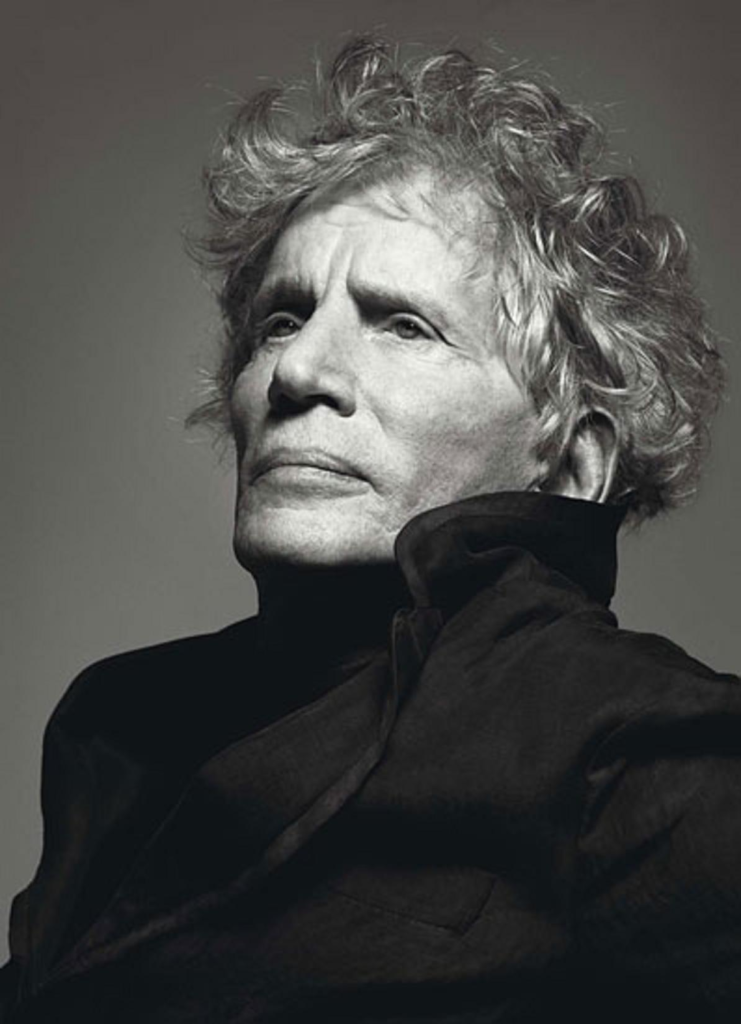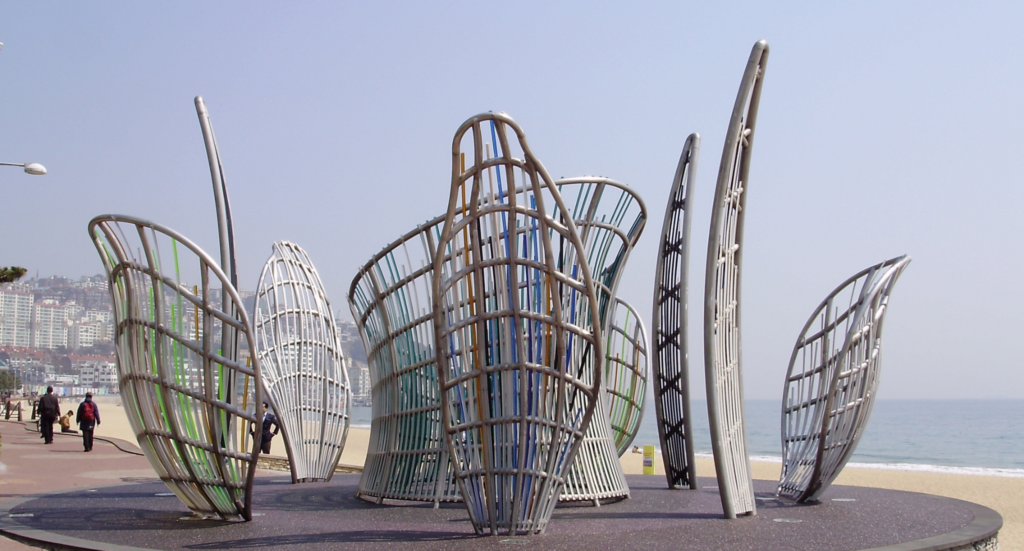Dennis Oppenheim BIOGRAPHY

Early Life and Education
Dennis Oppenheim’s journey began in 1938 when he was born in Electric City, Washington. From a young age, it was evident that Oppenheim possessed an innate passion for art and creativity. Growing up surrounded by the picturesque landscapes of the Pacific Northwest, his environment became a wellspring of inspiration.
After completing high school, Oppenheim embarked on his artistic education at Stanford University in California. During this time, he honed his skills and developed his unique artistic style. Drawing influences from various disciplines such as conceptual, land, and performance art, Oppenheim sought to challenge traditional notions of what constitutes an artwork.
Following graduating from Stanford with a Master’s degree in Fine Arts in 1965, Oppenheim wasted no time immersing himself fully in contemporary art. He relocated to New York City, a thriving hub for artistic experimentation and innovation during that period.
In the vibrant atmosphere of Manhattan’s avant-garde scene, Dennis Oppenheim made waves with his unconventional approach to art-making. His early works often involved utilizing everyday objects or materials in urban environments to create thought-provoking installations and sculptures.
Oppenheim’s relentless exploration earned him recognition within the international art community. His fearless embrace of new mediums saw him experimenting with photography, video installations, and even large-scale public artworks that transformed entire landscapes into immersive experiences.
What is Dennis Oppenheim known for?

Dennis Oppenheim is known for his contributions to the field of conceptual art. He was a prominent figure in the art world during the 1960s and 1970s, and his work often explored themes of time, space, and the human body.
Oppenheim was known for using unconventional materials and techniques, such as using his body as a medium or creating large-scale installations. Dennis Oppenheim’s work challenged traditional notions of art and pushed the boundaries of what could be considered art.
Career highlights

Career Beginning and Artistic Style
Dennis Oppenheim’s career began in the late 1960s when he emerged as a prominent figure in the contemporary art scene. His artistic style was characterized by its experimental nature and willingness to push boundaries.
Oppenheim was known for using unconventional materials and techniques in his artwork. He often incorporated performance art, sculpture, and installation elements into his pieces. This multidisciplinary approach allowed him to explore new ways of engaging with audiences and challenging traditional notions of art.
Oppenheim’s dedication to pushing artistic boundaries paved the way for future artists seeking to challenge conventional norms. His innovative approach continues to inspire artists today, making him a true pioneer in contemporary art.
Where did Dennis Oppenheim create his sculptures?
Dennis Oppenheim, a renowned American artist, created his sculptures in various locations throughout his career. Oppenheim was known for his innovative and conceptual approach to art, and his sculptures could be found indoors and outdoors.
One notable location where Oppenheim created sculptures was in New York City. He lived and worked in New York for many years, and the city significantly influenced his artistic practice. Oppenheim’s sculptures can be found in various public spaces, such as parks, plazas, and museums.
In addition to New York City, Oppenheim also created sculptures in other parts of the United States and worldwide. His works can be found in cities like Chicago, Los Angeles, and Miami, as well as in countries like Germany, Spain, and Switzerland. Oppenheim’s sculptures often engaged with their surrounding environments, creating a dialogue between the artwork and its location.
Dennis Oppenheim List of Work

Dennis Oppenheim’s career was marked by his groundbreaking artistic style and innovative approach to creating art. Throughout his life, he produced many thought-provoking artworks that pushed the boundaries of art.
Some of his most notable works include:
Device to Root out Evil | 1997 | It is a sculpture of an upside-down church that caused controversy when installed in various locations worldwide. |
Theme for a Major Hit | 1974 | A major art piece |
Annual Rings | 1968 | It is a series of photographs documenting the growth of a tree through the artist’s body. |
Reading Position for Second Degree Burn | A famous artwork |
Major Exhibitions
Oppenheim’s unique perspective and ability to challenge conventional norms earned him recognition worldwide. His work has been exhibited in many galleries and museums, including:
Museum of Modern Art in New York City
Tate Modern in London
Centre Pompidou in Paris
Accolades
In addition to his exhibitions, Oppenheim also received numerous awards throughout his career. In 1968, he won the National Endowment for Conceptual Art; in 2011, he was honored with The International Sculpture Center’s Lifetime Achievement Award.
Where materials did Dennis Oppenheim use in his art?
Throughout his career, Oppenheim experimented with various materials to create his art. He was not limited to any specific medium, instead choosing materials that best suited his artistic vision for each project.
One material that Oppenheim frequently used in his art was earth and natural elements. He often incorporated soil, rocks, and plants into his outdoor installations, blurring the line between art and the natural environment. These works aimed to challenge traditional notions of art and its relationship to the world around us.
Oppenheim also worked with more traditional art materials such as paint, canvas, and sculpture materials like metal and wood. His sculptures often featured large-scale constructions that pushed the boundaries of form and materiality. He would manipulate these materials unexpectedly, creating visually striking and thought-provoking pieces.
In addition to these materials, Oppenheim also embraced new technologies and materials as they became available. He incorporated video, photography, and performance into his practice, using these mediums to explore time, space, and perception concepts. He was always open to exploring new possibilities and pushing the boundaries of what art could be.
Legacy and Impact
Unfortunately, Dennis Oppenheim passed away on January 21, 2011, at the age of 72. However, his impact on contemporary art will forever be remembered as an artist who fearlessly explored new possibilities and challenged established conventions.
Dennis Oppenheim’s legacy inspires artists today through his iconic works that blur the boundaries between sculpture, installation art, and performance pieces. His contributions have left an indelible mark on contemporary art and continue to captivate audiences with their thought-provoking concepts.
As we reflect upon Dennis Oppenheim’s life and body of work, it becomes evident that he will always be remembered as one of contemporary art’s most innovative figures. His passion for experimentation, ability to push boundaries, and unwavering commitment to challenging conventional ideas make him an enduring icon in artistic circles.
While Dennis Oppenheims’ physical presence may no longer grace this earth, his spirit lives on through each artwork- a testament to his indomitable creativity and profound impact on the art world.
